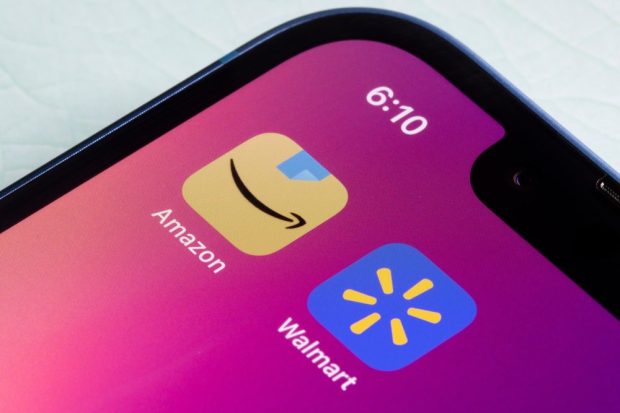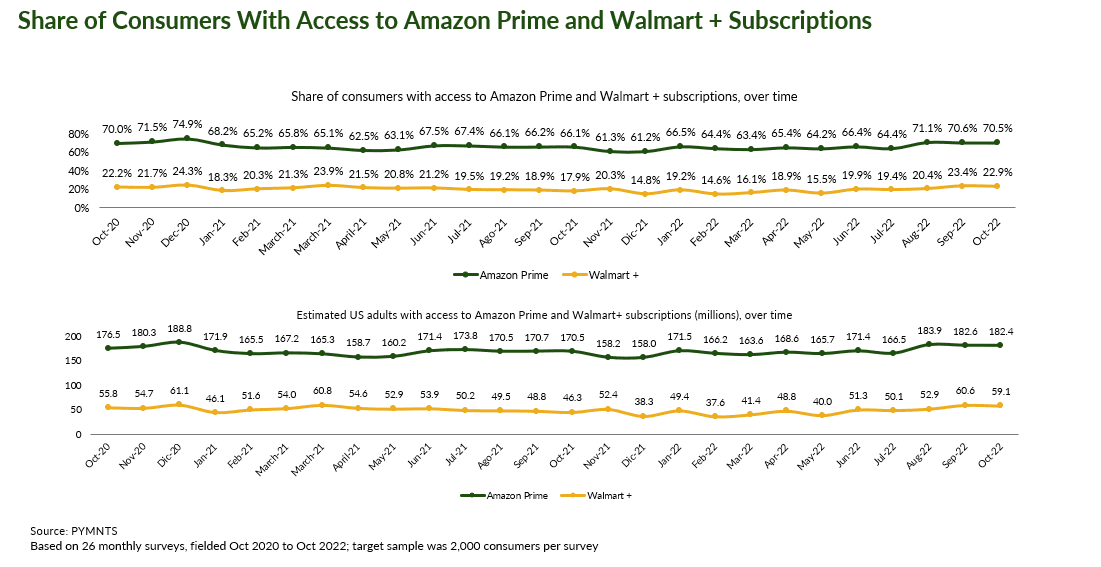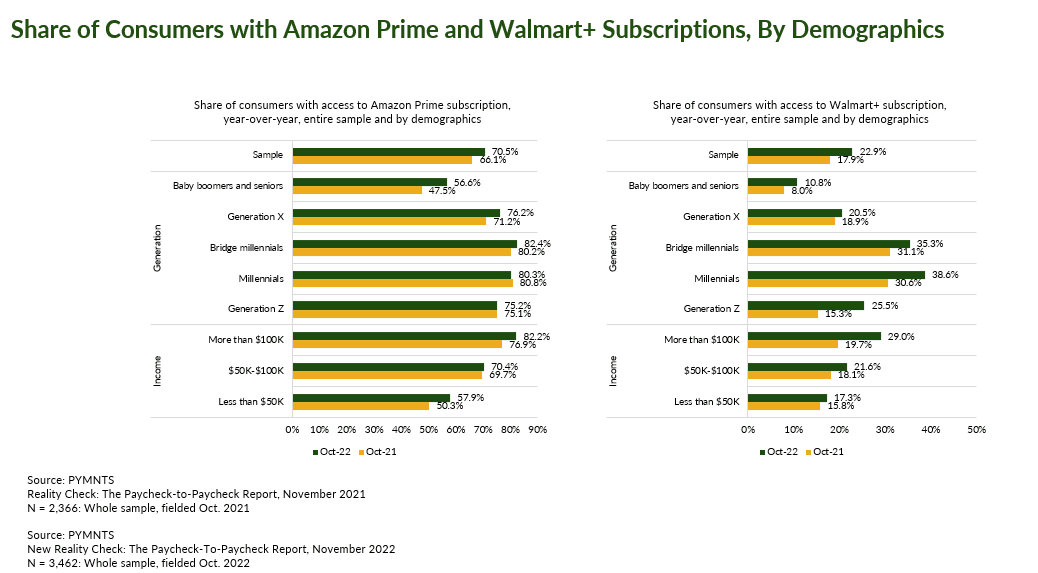Amazon Prime, Walmart+ Subscription Battle May Be Decided by Younger Consumers

The winner in the battle between Amazon Prime and Walmart+ for subscribers’ wallet share may be decided by younger consumers.
Recent earnings results by the two commerce juggernauts and PYMNTS’ data show increased traction in membership programs — and for Walmart, some increased penetration among younger generations.
Commentary from the calls and some company stats underscore that individuals and households are looking to get their essentials delivered to the doorstep (or found in aisles) and find value in doing so.
Convenience and Price in Focus
During the conference call with analysts, CEO Doug McMillon said, “Walmart+ members recognize our strength for convenience even more than the average customer.” He said the paid subscription service also shows “that people want to pay for delivery in bulk with an annual membership, not per delivery.” (Walmart+ specifics were not evident in earnings materials.)
Amazon, for its part, said in its results that, per commentary from Chief Financial Officer Brian Olsavsky, “the Prime membership remains strong, and so has the dollar [amount] purchased by Prime members.” The cross-selling opportunities as members sign up for video/streaming offerings such as Thursday Night Football have tied into higher purchasing of everyday products on the Amazon website, management said. He said later in the call that the drivers are “a combination of price selection and convenience.”
And as noted in our own coverage of Amazon’s earnings, while Amazon’s share of the food and beverage category is less than one-sixth the size of what segment leader Walmart generates from groceries, “we continue to believe grocery is a significant opportunity for us, and we’re focused on serving customers through multiple channels, whether that’s online delivery pickup or in-store shopping,” Olsavsky said. The quarterly filings from the company show that overall subscription services revenues were up 17% year over year, excluding FX, to $9.2 billion.
PYMNTS data show the jockeying for customers’ loyalty over time between these two companies.
Amazon’s roughly 70% share eclipses the approximate 23% share of U.S. consumers Walmart+ has. And, putting it another way, 182 million individuals have Amazon Prime subscriptions versus the roughly 59 million Walmart+ subscribers. Both firms have added roughly 12 million subscribers as measured year on year.

But within those numbers are some subtle shifts. The charts below show that Walmart+ has gained roughly 10% of the share among Gen Z, millennials and bridge millennials.

We hasten to add that Walmart’s gains with consumers do not necessarily come at the expense of Amazon, as the latter’s stats show that penetration in those same cohorts remains steady. But the fact that individuals have both subscription plans at the ready suggests they are strongly price-conscious. Indeed, Walmart has gained adherents among higher-income consumers (those making more than $100,000 annually), gaining nearly 10% there.
The younger consumers, of course, have longer-lived life cycles and would arguably readily consume the broader range of offerings (video and even health care) that come with the extensible platform models. Separate PYMNTS research has found that overall, millennials and Gen Z consumers were still driving subscription demand.
